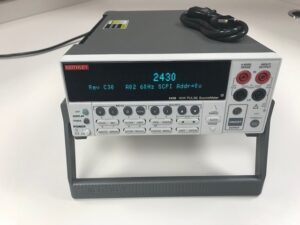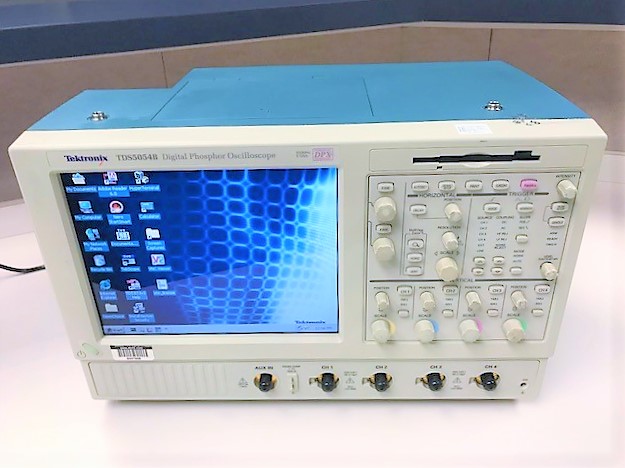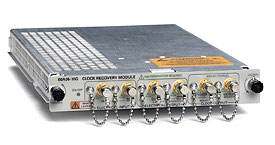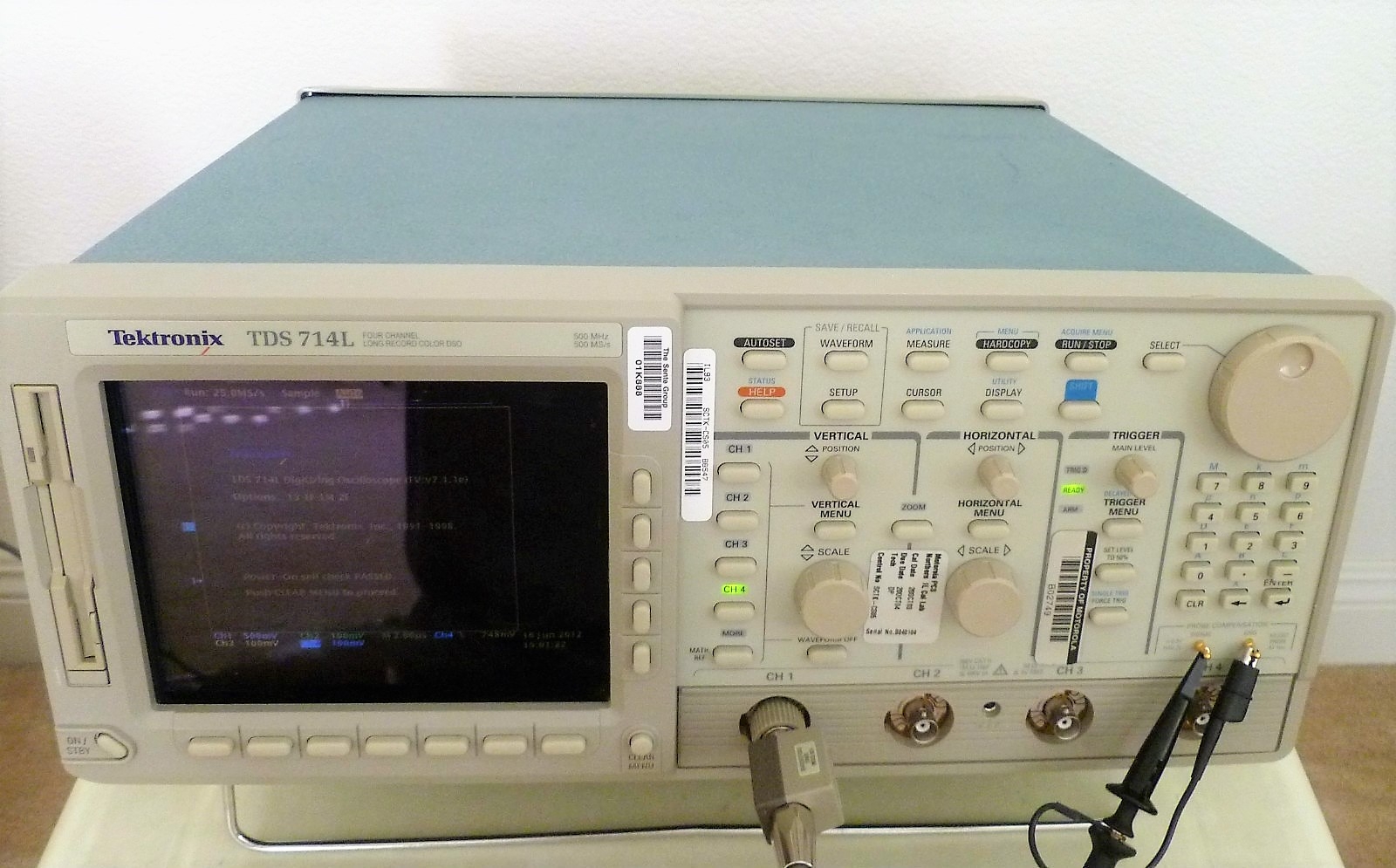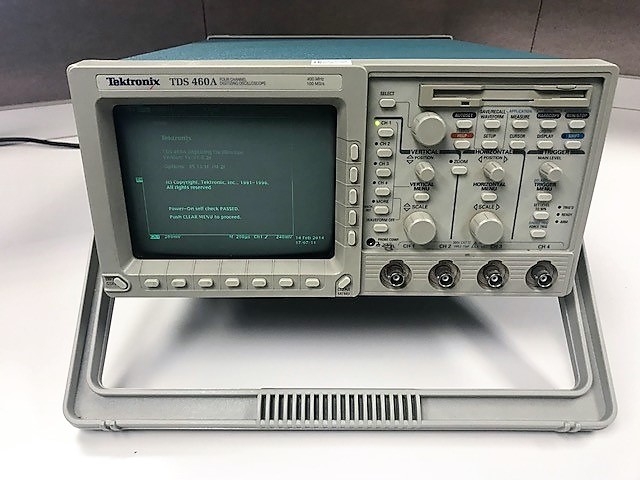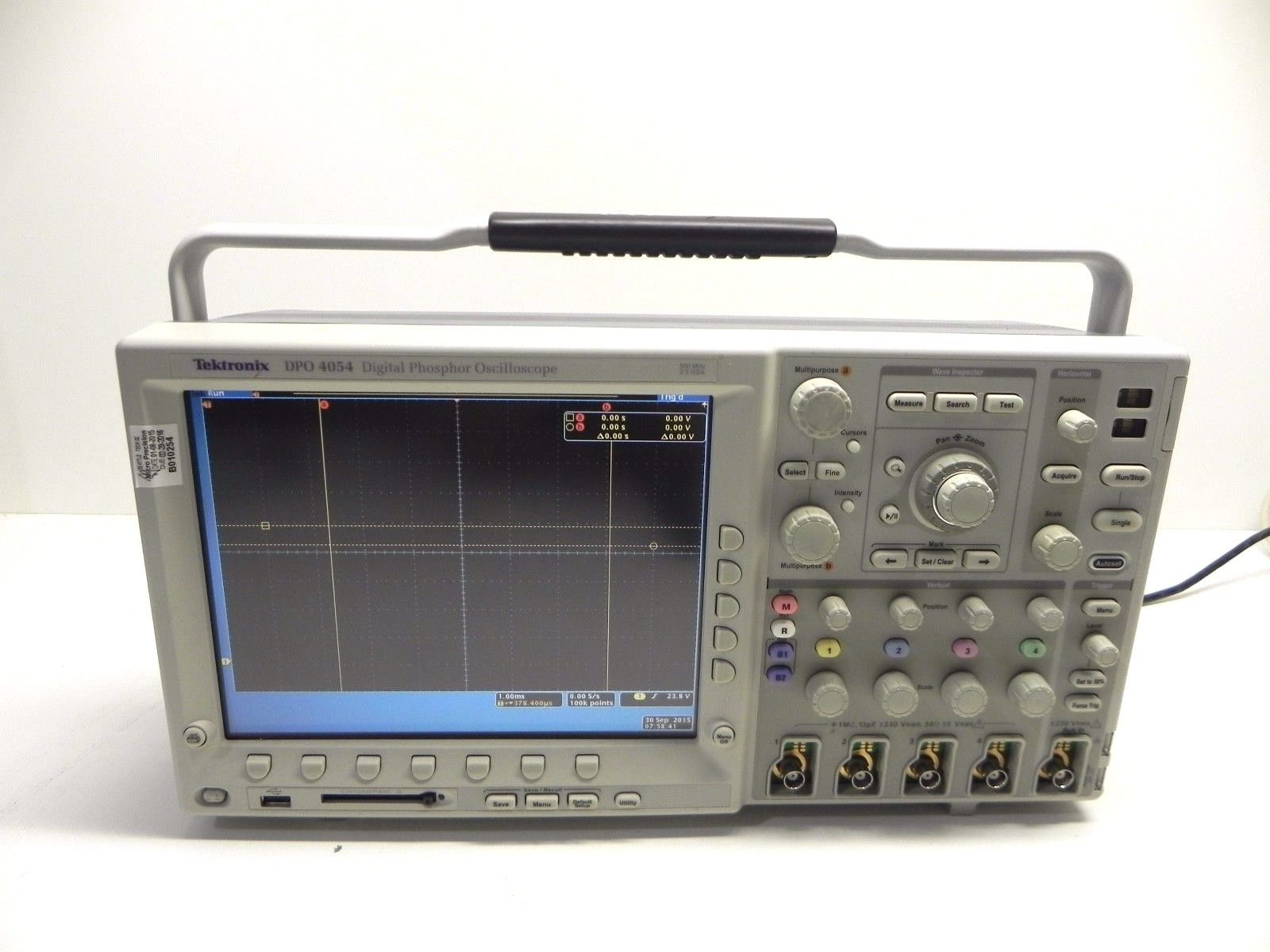Used
Keithley 2430 1KW SourceMeter
– Five instruments in one (IV Source, IVR Measure)
– 0 to 100V, 10A, 1000W Pulse Mode
– Source and sink (4-quadrant) operation
– 0.012% basic measure accuracy with 5-1/2 digit resolution
– 2-, 4-, and 6-wire remote V-source and measure sensing
– 1700 readings/second at 4-1/2 digits via GPIB
– Pass/Fail comparator for fast sorting/binning
– Available high speed sense lead contact check function
– Programmable DIO port for automation/handler/prober control
– Standard SCPI GPIB, RS-232, and Keithley Trigger Link interfaces
The TDS5000B Digital Phosphor Oscilloscopes (DPO) deliver 350 MHz, 500 MHz, or 1 GHz bandwidth, 5 GS/s real-time sample rate, up to 16 M record length, and a suite of advanced triggers, enabling you to capture and characterize even your most demanding signals. DPOs provide unmatched insight into signal behavior by displaying, storing, and analyzing complex signals in real time using three dimensions of signal information: amplitude, time, and distribution of amplitude over time.
Read MoreTektronix 80A05 Electrical Clock Recovery Module, 50 Mb/s to 3.188 Gb/s, with Option 10G
Includes Option 10G
The 80A05 Electrical Clock Recovery Modules enable clock recovery for electrical signals. Additionally, the 80A05 provides internal routing of the recovered clock for triggering of the 8200.
The 80A05 provides high level of integration and the best sensitivity available, and is the optimal solution for testing of optical transmitter components and electrical components of optical systems. The 80A05 PLL loop bandwidth selection is automatic with no interaction, leading to easy setup and operation.
Read MoreTektronix TDS714L 4 CH 500 MHz , 500MSa/s Oscilloscope Color with Options 13, 1F, 1M, 2F
The high bandwidth (500 MHz) of the TDS714L together with its sample rate (500 MS/s) shows the true signals that other scopes may be missing.
The TDS714L provides a wide dynamic range, flat response, fast overdrive recovery, calibrated DC offset, 1-mV/div sensitivity, 1-ns peak detect, and internal calibration.
Options 13, 1F, 1M, 2F
Read More-41.5% Accuracy
-100 MS/s Sample Rate
-2 and 4 Channels
-Record Lengths to 120 K (Opt. XL)
-Floppy Disk Storage
-Roll Mode Allows You to See Acquired Data Points Without Waiting for the Acquisition of the Complete Waveform
-Use the Video Trigger Mode to See NTSC, PAL, SECAM Signals or Your Own Custom Video Signals
-Capture Those Glitches with the 10 ns Peak Detect Mode
The Tektronix DPO4054 digital phosphor oscilloscope (DPO) delivers the performance you need to visualize even your most demanding signals. With bandwidth of 1 GHz, and with a minimum of 5 X oversampling on all channels and sin(x)/x interpolation standard, you can be confident that even the fastest transient events will be captured and displayed accurately. The standard 10 M record length on all channels enables you to capture long windows of signal activity while maintaining fine timing resolution.
The Tektronix DPO4054 offers a variety of analytical solutions including cursors, 25 automatic measurements, statistics, and waveform math. Despite a tiny footprint (only 5.4″ deep) and light weight (11 lbs.), the DPO4000 Series offers exceptional performance, a large 10.4″ XGA display and knob per channel vertical controls.
Read More- « Previous
- 1
- …
- 133
- 134
- 135

